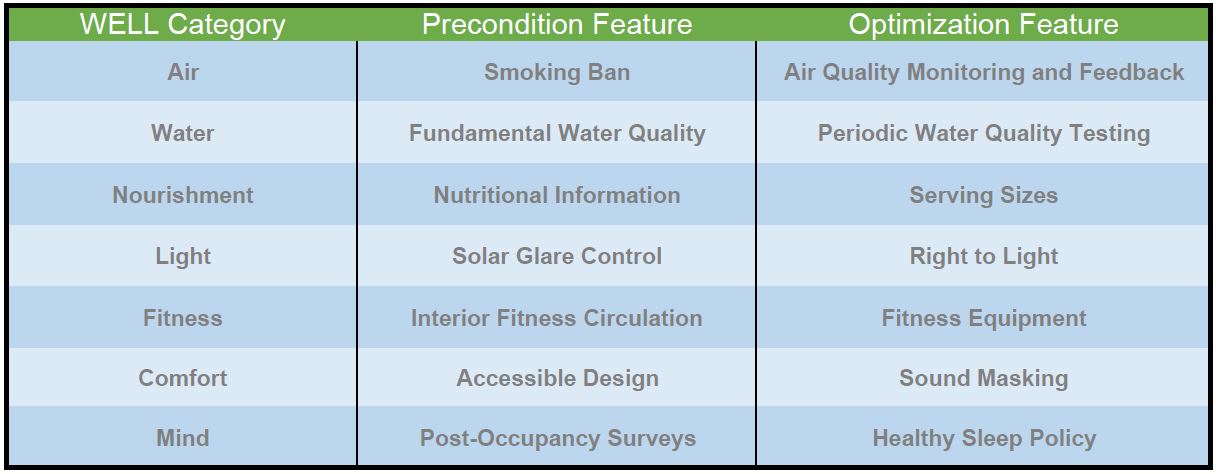WELL Blog Series Part I: Introduction to the WELL Building Standard
September 26, 2018 | Author: Conor McGuire
I have my friend Blake to thank. The WELL Building Standard has been kicking around for a few years and I’ve been watching it from a distance. When I started my sustainability work, I focused on the efficiency side; how do we do more with less? How do we make buildings work more effectively? How do we reduce material and energy use? Better yet, how to eliminate building CO2 emissions entirely? (Energy use in and of itself is not inherently bad...it’s the air and water pollution and soil damage caused by extraction and burning fossil fuels.) For a time, this approach to sustainability worked well. Efficiency, effectiveness, and CO2 reductions still have a primary role in any green building. As I’ve watched and listened to the increased interest in the WELL Building Standard, it’s become clear that human health and wellness is a fundamental part of a sustainable building. So how does the WELL Building Standard fit into all of this? And what about my friend Blake?
Learning More About the WELL Building Standard
It’s clear my colleagues and I need a crash course on this whole “WELL” thing. It started popping up on RFPs. Industry chatter is growing. As the needs of our clients grow, Columbia must grow in our ability to serve the clients. We’re also seeing great potential clients building WELL certified buildings. A handful of Columbia staff visited a WELL certified building and were wowed by an impressive panel presentation, office tour, and the enthusiasm of the client. It is time to bring knowledge about WELL to our staff. But how?
Enter Blake
"WELL transforms academic research into simple, actionable steps that built environment professionals can readily apply to promote better health outcomes." - Blake Jackson
I’m fortunate to know a few great people, some really excellent people, and I also know Blake Jackson, Sustainability Design Leader, Associate at Stantec Architecture. Blake was kind enough to visit our office for his ‘free’ lunch, and to discover why the expression “there’s no such thing as a free lunch” exists. He gave a great presentation on the basics of the WELL Building Standard. Following are just a few things I learned from Blake’s presentation:
- WELL is not competing with LEED, but is complementary to LEED. In a very general sense, LEED focuses on the impacts of a building looking outward towards planetary health. For example, LEED considers among other things, site selection, material extraction, and, of course, reducing energy use to reduce CO2 emissions. WELL, on the other hand, focuses on the people inside the building and how the building supports their health and wellness.
- WELL has seven categories containing 100 different itemized “Features.” Some Features are mandatory Preconditions and pursuing additional features are considered Optimizations. The following table provides WELL’s seven categories with an example of a mandatory Precondition and an elective Optimization.
- WELL Features integrate scientific and medical research on interactions between people and built spaces. Many behaviors are consciously or subconsciously influenced by external cues, and our physical health is strongly correlated with where we spend our time. WELL provides structure and credibility to support companies and staff who desire healthy living.
Blake's Exit
Blake detailed many more WELL Features and answered many questions handily. Just as he was wrapping up, he issued a call to arms and stated, “and these are all great reasons that Conor should take the WELL Building Standard exam and become a WELL Accredited Professional.” Wait, what did he just say? That wasn’t part of the plan!?! Although in truth, I had been considering taking the WELL AP exam and he and I had previously discussed it privately, but now I was publicly called out and challenged to step up and gain more than a cursory working knowledge of WELL. In addition to serving our clients, Columbia is also a company that cares deeply about the health and wellness of our team and the environmental impacts of our work. So, down the rabbit hole I go...
WELL Accredited Professional
"The WELL Accredited Professional (WELL AP) credential demotes expertise in the WELL Building Standard and a commitment to advancing human health and wellness in buildings and communities." - www.wellcertified.com
In this spirit, I registered for the WELL Accredited Professional Exam and will be studying the best practices in our industry for creating healthy building projects, both in relation to impacts on the health of our planet, and on the health of our team. Next, I continue my journey to become a WELL Accredited Professional as I study to understand the WELL Building Standard. I’m looking forward to providing post-exam feedback.
*Stay tuned for Part II and Part III*


